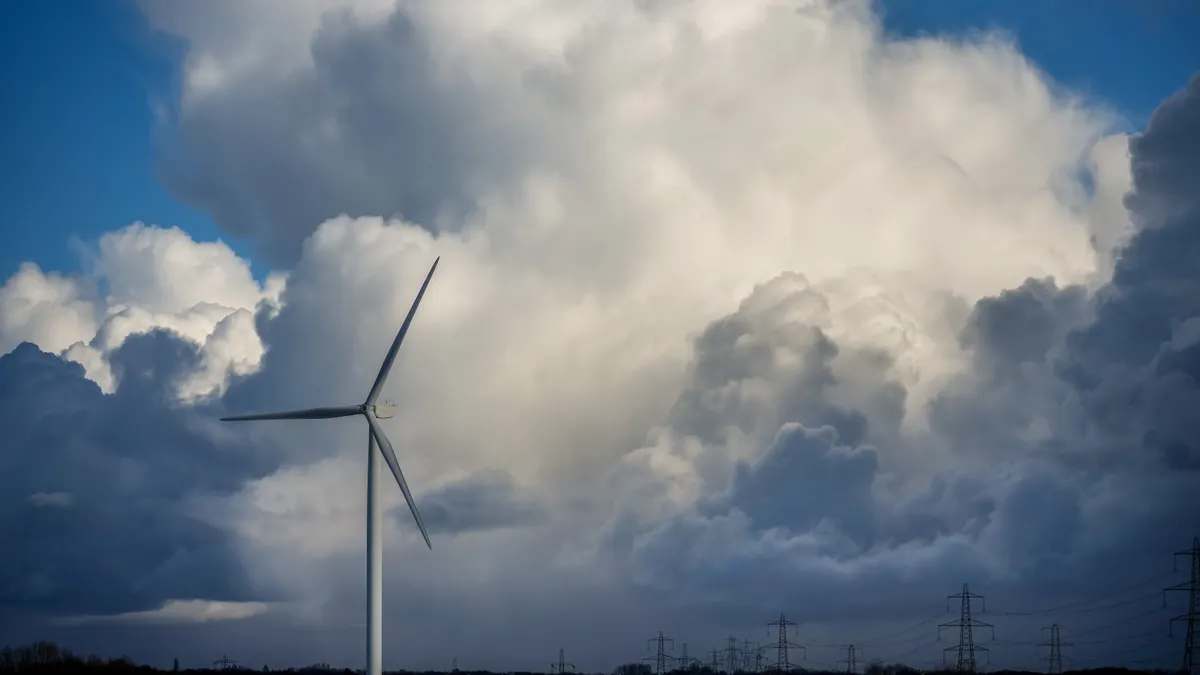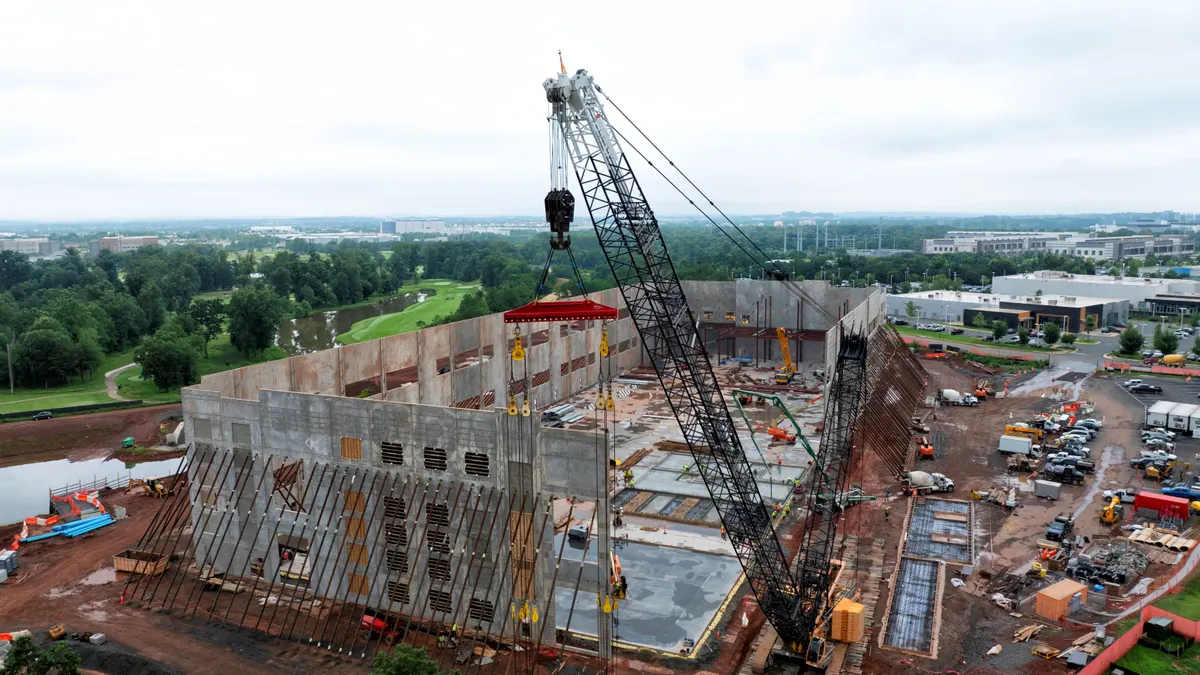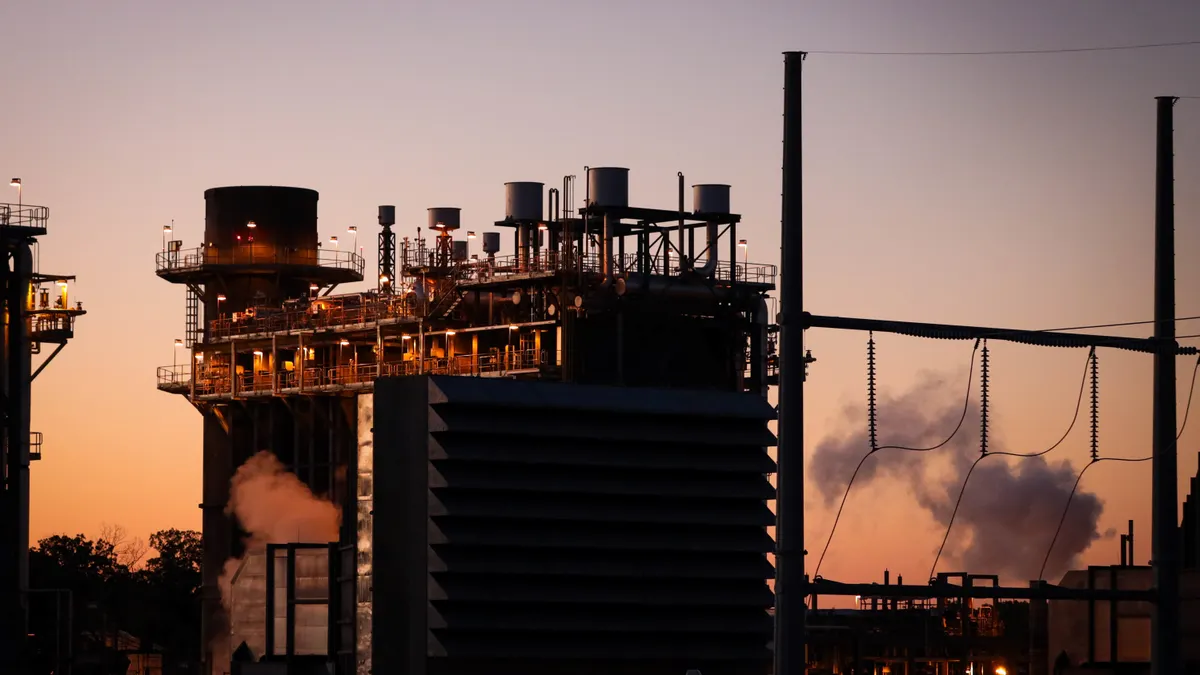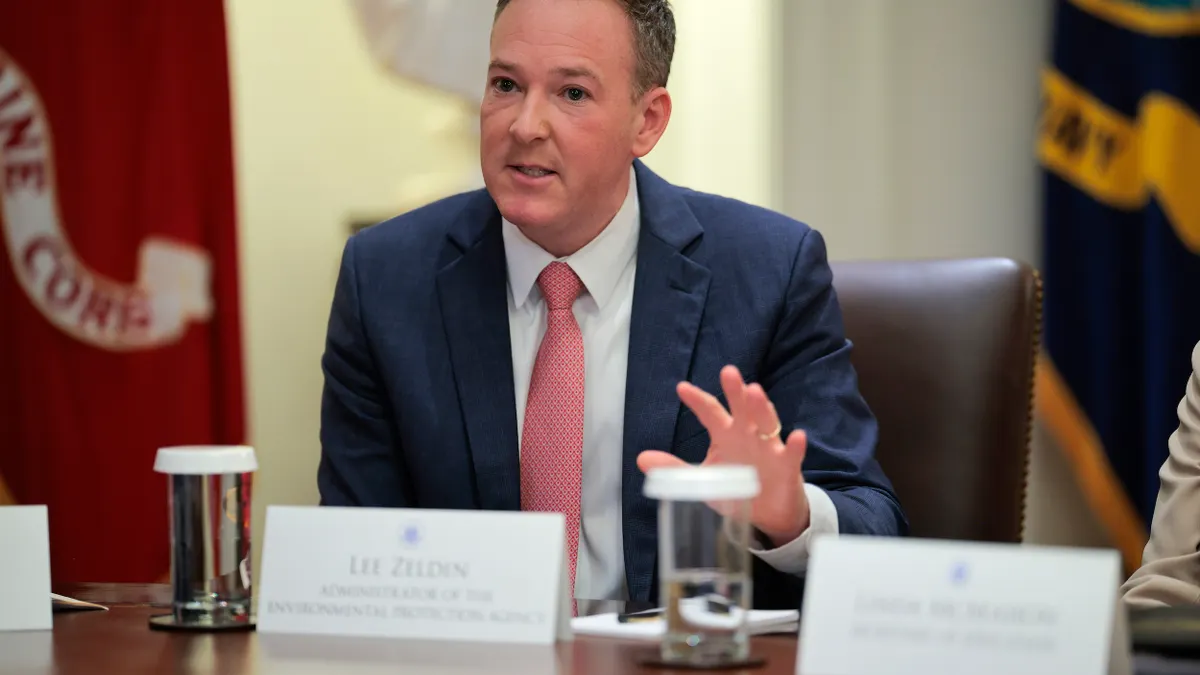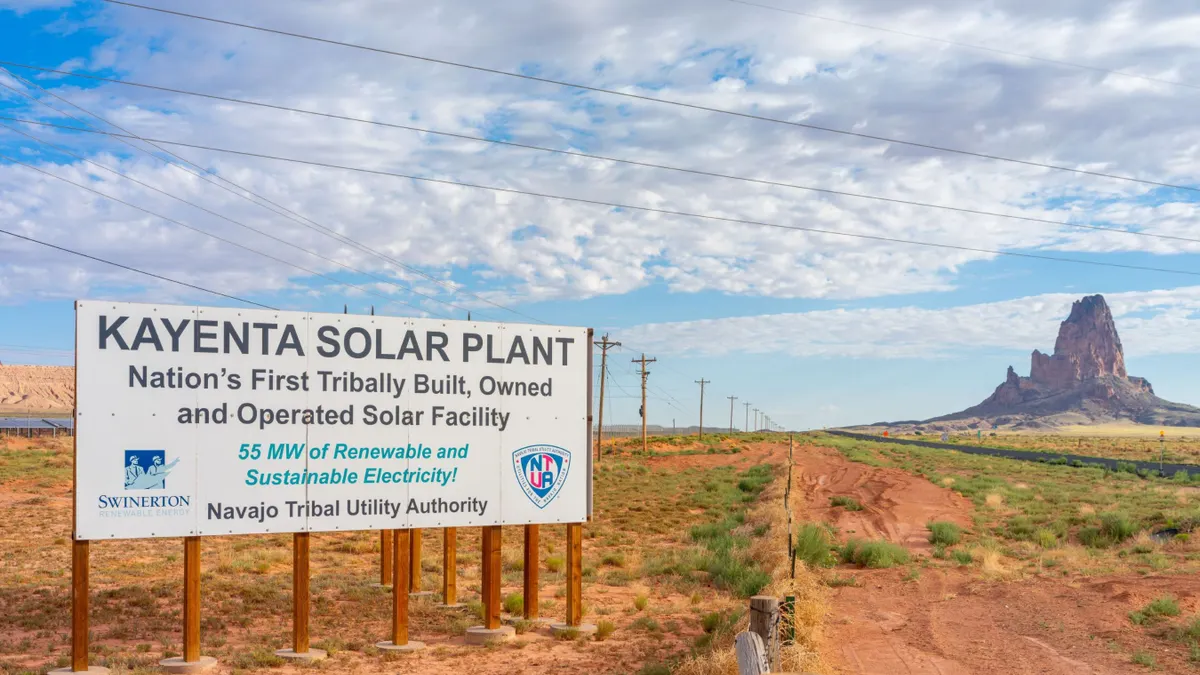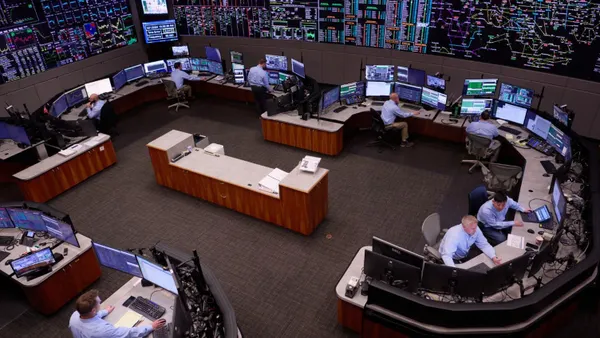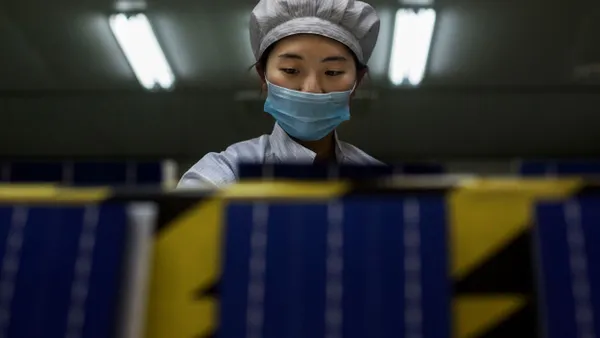Two months after the passage of the One Big Beautiful Bill Act, which trimmed the lifespan of most of the Inflation Reduction Act’s clean energy tax credits, the industry is still trying to understand the implications of the legislation’s new foreign entity of concern rules and hoping for clarity from upcoming Treasury Department guidance.
“I discuss this almost every day, it seems like,” said Vinson & Elkins tax partner Jenny Speck. “Having clear, administrable rules is the first step, because we already have a statute that creates ambiguity. We're hearing that this is priority guidance — it should be at the top of their list in terms of what they're working on.”
The FEOC provisions in OBBBA were expanded from the IRA’s original rule restricting foreign entities of concern – entities with ties to China, Russia, North Korea or Iran – from claiming clean vehicle tax credits. The new FEOC rules apply to the 45X advanced manufacturing credit, the 45Y production credit, and the 48E investment credit.
“We look at wind, solar and 45X as the three that are going to have probably the most rigorous diligence,” Speck said.
Ties to foreign entities of concern “can be such things as 25% or more ownership by a single Chinese shareholder or 40% by two or more such shareholders or at least 15% of total debt held by Chinese lenders, only counting debt holders at original issuance,” law firm Norton Rose Fulbright said in a July article. “Licensing arrangements with Chinese interests can also turn a supplier into a prohibited foreign entity … It is not clear how U.S. developers will be able to spot such arrangements.”
Advait Arun, senior associate for energy finance at the Center for Public Enterprise, said he thinks there’s “some understanding of what the cost percentages of prohibited content look like,” but as far as “what kinds of licensing or servicing agreements might violate a FEOC rule, or what kinds of prohibited foreign entities actually are already in these construction processes — I just don't think we have that clarity yet.”
“Having clear, administrable rules is the first step, because we already have a statute that creates ambiguity. We're hearing that this is priority guidance — it should be at the top of their list in terms of what they're working on.”

Jenny Speck
Tax partner at Vinson & Elkins
The Treasury Department and IRS released OBBBA guidance on Aug. 15 clarifying how project developers can prove they commenced construction before the deadline to qualify for the 45Y and 48E tax credits, and said in a footnote that they are “currently drafting additional guidance as is necessary and appropriate” regarding the FEOC rules.
The FEOC rules “are extremely onerous,” said Vinson & Elkins tax partner Lauren Collins. “They are extremely complicated. They have multiple traps for the unwary. If you do not spend a considerable amount of time trying to understand these rules and diligencing ownership structures and debt structures, you’re bound to come into some issues.”
Collins said that as her firm unpacks the rules, they are finding “new issues almost every day, in trying to apply them to real world circumstances.”
“My basic takeaway is there are very few circumstances where taxpayers will actually trip these rules, and actually become a prohibited foreign entity once they're applied,” she said. “It's just that they're so hard to apply and diligence that the administrative burden of proving it out is really the issue. It's not really a substantive issue of, will we trip this? It's just, how do we prove it with any level of certainty?”
Resulting industry shifts
Bryen Alperin, a partner and managing director at Foss & Company, also called some of the new FEOC restrictions “onerous” and said being able to meet these new requirements “is going to be one of the greatest challenges for the industry ... it might add a lot of costs in terms of legal compliance, et cetera.”
Alperin said that investors are already starting to opt for 45Y production tax credits over 48E investment tax credits, as the latter are subject under the FEOC rules to potential recapture.
“With an investment tax credit transaction, you get all your tax credits up front in the first year, but they're going to have a ten year compliance period where they could have their credits recaptured,” Alperin said. “Let's say that you build a solar power plant in 2028 and you claim your tax credits in 2028. Our investor gets their tax credit, and then eight years later — there might even be a new owner of the project at that point, we're no longer involved, and somebody accidentally hires a Chinese company to do maintenance on the project.”
In that scenario, the tax credit from eight years ago could be recaptured, Alperin said.
“That’s, I think, the big worry — that no matter what the rule ends up being, once the administration releases it, that you just have a quite substantial compliance burden that you have to take on yourself. And then, of course, there's the greater legal risk — where the IRS’s statute for recapture is also longer now, in a way that puts you on the hook for a much longer time period.”

Advait Arun
Senior associate for energy finance at the Center for Public Enterprise
“That's got a lot of our investors nervous,” Alperin said. “A lot of our investors who used to only do solar are now looking at doing wind transactions, because those generate production tax credits. In the future, we might see more solar projects electing to go with production tax credits instead of these investment tax credits, because there's going to be a bit of a risk premium applied to the investment tax credit that investors will be uncomfortable with.”
Arun said the FEOC rules also inherently disadvantage small developers, who have fewer resources to devote to ensuring supply chain compliance.
“That’s, I think, the big worry — that no matter what the rule ends up being, once the administration releases it, that you just have a quite substantial compliance burden that you have to take on yourself,” he said. “And then, of course, there's the greater legal risk — where the IRS’s statute for recapture is also longer now, in a way that puts you on the hook for a much longer time period.”
Developers are also shifting their strategies in response to guidance that the Treasury Department released in August, which stipulated that construction on most wind and solar projects is considered to have begun “when physical work of a significant nature begins,” instead of when 5% or more of the total cost of the project has been paid. Solar facilities with a net output of less than 1.5 MW can still use the 5% test.
“[The physical work test] is definitely a little bit more subjective,” Arun said. “With 5%, if you have your contracts, if you've demonstrated payments, it's easy enough to show those to the IRS and to verify. But the other thing that they changed about the physical work test is there's a difference in language now between ‘physical effort’ versus ‘program of construction’, where payments and contracts just simply don't count anymore toward a facts or circumstances based-analysis the IRS might run.”
The IRS now has “discretion” in a way that adds “more squishiness” to the process, Arun said.
Alperin noted that the Trump administration is moving toward more subjective discretion in general, putting pressure on solar and wind projects “not just with the IRA, but also with permits that may not be granted — that used to be just trivial, standard permits that the government would grant.”
Overall, Alperin said the industry is still digesting the physical work test guidance, “but from what I've heard, it's not as impactful as some feared it may be.” He said it “was a relief” that the commence construction guidance “wasn't retroactive, and that it didn't really change the playing field that much.”
Collins said she and her colleagues view the latest guidance as “very workable.”
“We're seeing many clients and developers start acting in response to it, and start engaging in the various forms of significant physical work in order to safe harbor their wind and solar projects,” she said. “The physical work test has been used for well over a decade. We have pretty clear rules on how to apply it that weren't changed, and it's cheaper than the 5% safe harbor method.”
Collins noted, though, that the 5% test “is not subjective. It is, you know, you pay that amount and you're safe harbored, and that has a level of certainty that the industry has liked. But the significant physical work method has really gained favor over the years and is well established.”
Like the lack of clarity around FEOC rules, Arun said, the move away from the 5% test may disadvantage developers large enough not to qualify for the 1.5 MW solar exemption but small enough to be a “minnow” instead of a shark.
“Obviously, I think everyone's correct in arguing that this isn't the worst case scenario for the industry,” he said. “But I think the ability to prove to the IRS conclusively that you've begun construction, that you're performing construction activities, relies on having the kind of market share and relationships in the market already that allow you to have already built gigantic pipelines of these projects.”
Wind and solar projects that commence construction before July 4 next year can still qualify for the placed-in-service deadline of Dec. 31, 2030, under a safe harbor provision, while projects that commence construction after that have to be placed in service by the end of 2027 to qualify.
In addition, the OBBBA includes a provision that projects that start construction by the end of 2025 are not subject to some of the new FEOC restrictions. In response, developers are pushing to get projects under construction as quickly as possible, Alperin said.
“Developers already had pushed to get as much as they started as they could under construction,” he said. “But I think they'll be doubling down on that now through the end of the year, to try to start as many projects as they can.”



